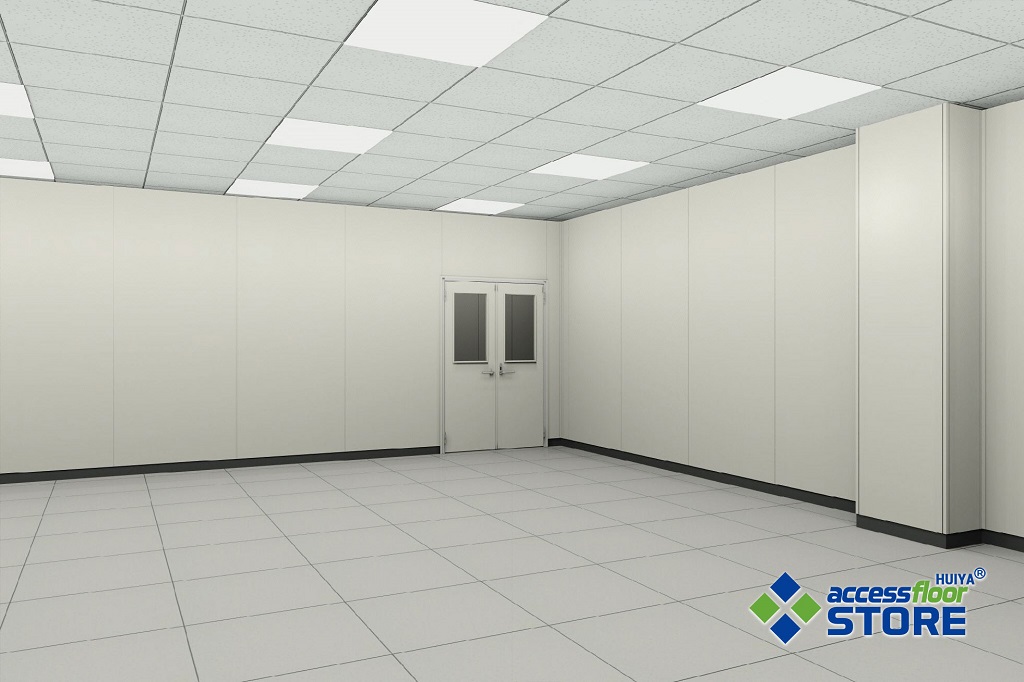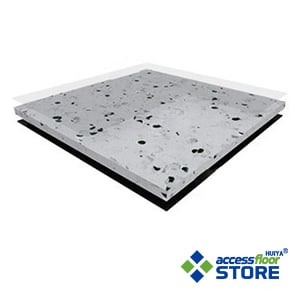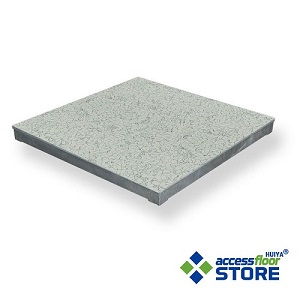NEWS TAG
brand
Dissipative Floor vs. Conductive Floor: Differences Between The Two Anti-Static Floors
In the anti-static floor industry, we usually divide antistatic materials into two types: conductive floor and dissipative floor. These two kinds of anti-static floors are widely used in various places where anti-static is required. Recently, many customers are consulting the difference and difference between these two types of flooring. Probably the biggest question we’re asked by clients for the first time when they inquire is “Which material should I use? Should I use static-dissipative raised flooring or should I use conductive access flooring?” Today, Huiya Raised Floor System will explain the difference between the two.

To understand the difference between a conductive anti-static floor and a dissipative anti-static floor, you need to understand some relative definitions.
What is ESD?
Electrostatic discharge or ESD is the static electricity pulse that occurs when a charged person or surface is in contact with another object. Static electricity is ubiquitous, almost any movement within an environment will contribute to the static electricity present, such as when a person is walking on a carpet, they can charge up to 30,000 volts. In most cases, even if an electrostatic discharge occurs, the ESD is harmless. However, in some environments, such as data centers or electronics cleaners, electrostatic discharge can be very dangerous and can even have catastrophic consequences. Therefore, antistatic solutions such as anti-static raised flooring are widely used in these environments.
What is Anti-Static Flooring?
The term "antistatic" refers to a state in which the generation of static electricity is suppressed during contact and separation with other materials. By grounding the charge, anti-static flooring prevents the ESD from building up and discharging into the environment, so installing anti-static flooring is an essential step in creating a safe environment for workers and visitors. The anti-static floor can be static dissipative or electrostatically conductive.
What is Static Conductive Floor?
Conductive flooring is a flooring material with a grounding resistance of less than 1.0 x 10 6 ohms, a floor designed to prevent, mitigate, dissipate, conduct, remove or ground the body, furniture, moving carts and equipment with excessive static electricity. Conductive floor tiles are a type of floor tile made of carpet, synthetic rubber or vinyl that is used to reduce electrostatic discharge (ESD).

What is Static Dissipative Floor?
Static dissipative flooring tile is the floor material with a grounding resistance of less than 1 x 1012 ohm but greater than 1 x 105 ohm, which is also used for the mitigation of electrostatic discharge (ESD) and usually composed of carpet, synthetic rubber or vinyl composition.

Dissipative Floor or Conductive Floor? Which Anti-Static Floor To Choose For Your Project?
How to Select Anti-Static Floors? Dissipative floor or conductive floor, which type of Anti-Static Floor you should choose for your project? What is the difference between conductive and static-dissipative antistatic floor? Huiya takes you to find the answers to these questions, by comparing the two antistatic floors’ resistance performance, application, structure, function, installation.
Resistance performance is different - This is the most obvious and important difference between the two antistatic floors, the conductivity floor come with smaller resistance to ground, and the dissipative floor has higher. The conductive floor resistance is less than 1.0 x 106 ohms and the static dissipative floor volume resistance is between 1.0 x 106 and 1.0 x 109 ohms.
Anti-static floor application is different - Conductive flooring is generally used in large areas such as factories, workshops, and operating rooms. Dissipative floor is used in the data center, server room, computer room, engine room, command room, school, bank, and other places.
ESD floor structure is different - Most of the conductive floor is a straight-line anti-static floor panel, while most of the dissipative floor is raised floor. With both ESD floors, you can find the best solution in AccessFloorStore.Com.
Anti-static floor function is different - Conductive flooring generally has the functions of antistatic, corrosion resistance and wear resistance. Dissipative floor has the functions of corrosion resistance, wear resistance, high-temperature resistance, fire prevention, anti-static, wiring and other functions.
Construction requirements are different - Most of the conductive floor is directly paved, which requires high grounding and self-leveling if necessary to ensure the smoothness of the ground. The dissipative raised floor has lower requirements on the ground, is clean and tidy, has low water content and low flatness requirements.
Installation method is different - Conductive ESD flooring only needs to be treated with a straight floor and pasted on the ground. Dissipative ESD floor system not only contains the raised floor panels, but also require access floor accessories, the parts need to be square, and the floor is placed in the square.
The difference between conductive floor and dissipative floor seems to be more. When actually choosing anti-static ESD floor, Huiya Raised Floor System as an anti-static floor expert will recommend the type of floor that best suits your project according to the customer's environmental requirements, location, required materials for static sensitive parts, Factors such as performance requirements and price, and customers only need to provide accurate product requirements.
